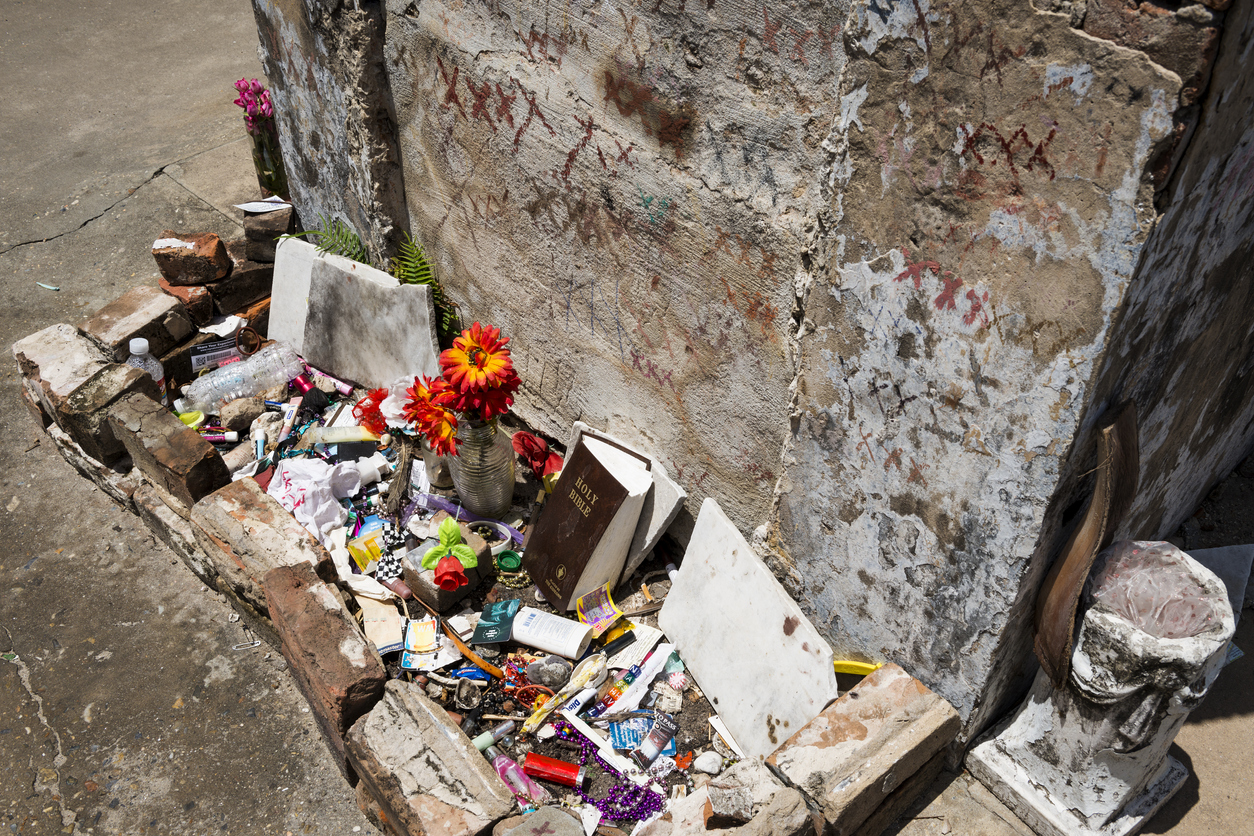In my latest novel, Blood on the Bayou, the culture of New Orleans takes center-stage. Voodoo is of particular interest to detectives chasing the infamous “Bayou Slasher,” New Orleans’ latest serial killer. The killer has a very particular M.O.— the victims’ throats are slashed, they are left with a wooden cross in their hand, and three Xs are carved into their foreheads. Voodoo is often vilified in media, which is showcased by the early presumption that the XXX has Voodoo ties. However, Voodoo has a deep history in Louisiana and much kinder values than many give it credit for.
History of Voodoo in New Orleans
Louisiana Voodoo came about through a process of combining several religions. Mainly, it mixes traditional West African religions, Roman Catholicism, and Haitian Vodou. It is widely accepted that the West African religions came to Louisiana through the slave trade and became infused with Catholic traditions. From there, the influence of Haitian Vodou came with the migration of thousands of Haitians fleeing from the 1791 Haitian Revolution. Each had its own influence on the Voodoo we see today.
One of the most prominent figures in Voodoo history is Marie Laveau, known as the “Voodoo Queen” in the early 19th Century. She was known as a healer and counselor to those who needed assistance with anything from their health, personal relations, or finances. Much of her legacy is shrouded in legend or rumor, but she was a prominent and well-loved community activist. There is even a tradition in New Orleans that says if a person draws three Xs on Laveau’s tomb, she will grant their wish. Hence, why some people in Blood on the Bayou may have immediately connected the XXX to Voodoo.
While Voodoo has never been explicitly outlawed at any point, it was seen as a potentially dangerous religion and some measures were taken to restrict Voodoo rituals. Newspapers began condemning Voodoo in the early 1800s and from there it’s notorious reputation only grew.
Core Values & Rituals
Louisiana Voodoo is a religion that believes in one God that does not interfere with daily lives. Instead, various spiritual forces exist to influence and guide practitioners in everyday affairs. These spiritual forces, known as loa or lwa, can come from nature or ancestors. Voodoo has a strong belief in remembering and connecting with deceased family members to find direction in life.
There are several rituals commonly associated with Voodoo. Altars & offerings, Gris-Gris, and personal ceremonies are among them. Altars can be dedicated to various lwa or family members, with food and coin or objects associated with the spirit being common offerings. Gris-Gris are a type of charm used to ward off evil or bring luck. They are usually small bags filled with objects that represent the needs of the wearer. In general, Voodoo is a very personal and private religion that deemphasizes large ceremonial practices, with most rituals and readings being done one-on-one with a priest or priestess.
There is one day in particular, St. John’s Eve, where large celebration is encouraged. Falling on June 23rd, St. John’s Eve is a celebration of the Summer Solstice that began with Marie Laveau in the 1830s. She would host both feasts and head-washing rituals on the shore of Lake Ponchartrain, which are traditions continued to this day in New Orleans.
I hope this has helped dispel some negative myths and rumors around Voodoo and furthered an understanding of its rich history and unique cultural impact on the South.
